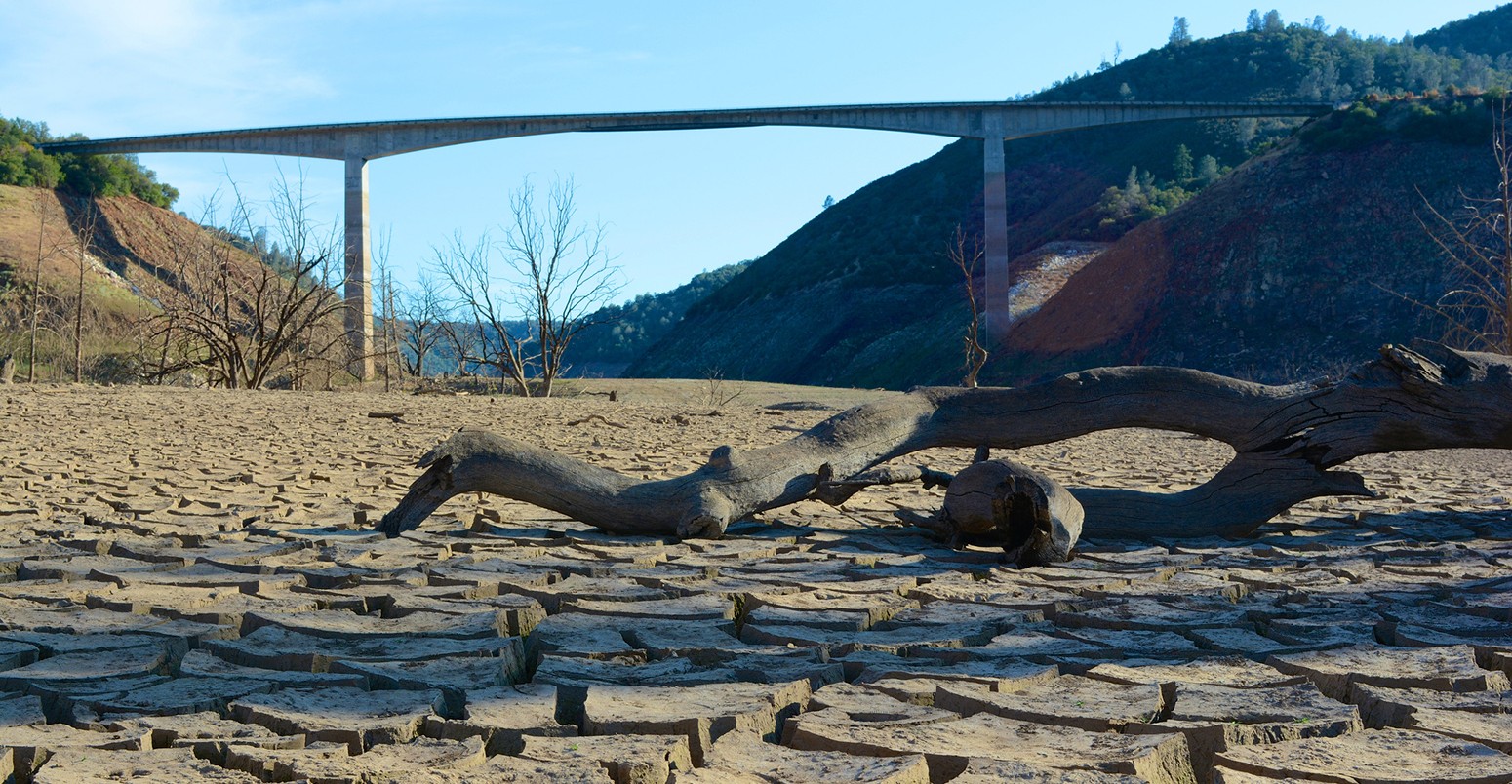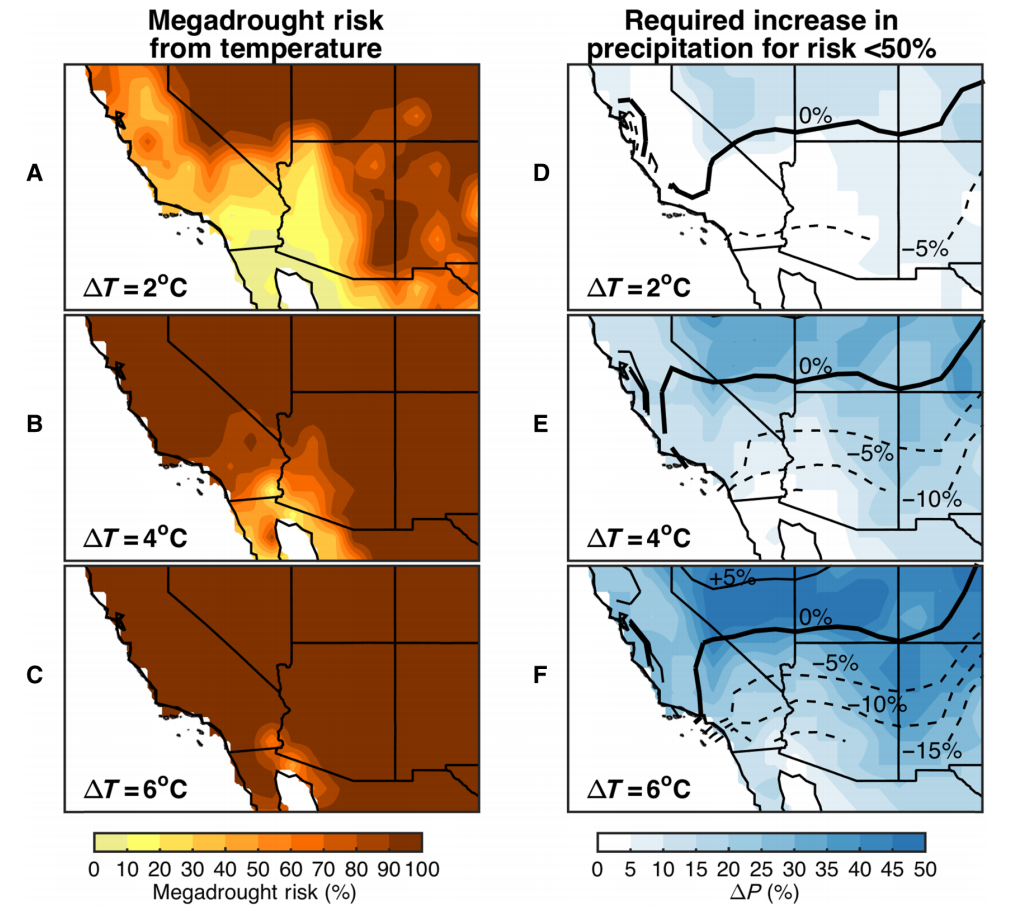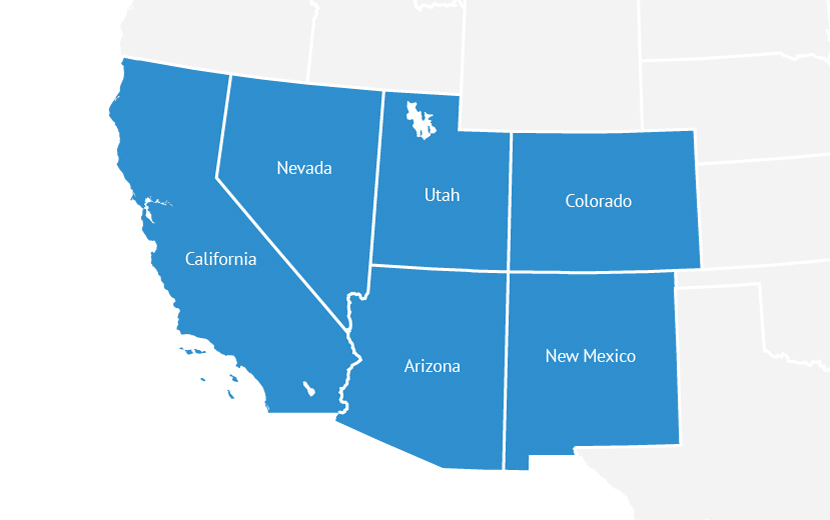
Climate change could push risk of ‘megadrought’ to 99% in American southwest
Robert McSweeney
10.05.16Robert McSweeney
05.10.2016 | 7:00pmA megadrought spanning several decades could be almost certain to hit the American southwest this century if greenhouse gas emissions are not curbed, a new study says.
Rising temperatures will “load the dice” in favour of a megadrought in the region, the researchers say. Combined with a decline in rainfall, warming conditions could put risk levels at 99% for much of the region, the study finds, while moderate increases in rainfall would still leave risk levels above 70%.
But there is a “glimmer of hope” another scientist tells Carbon Brief. The study also shows that keeping global temperature rise to no more than 2C above pre-industrial levels would cut this risk by half.
Megadrought
In the last few days, state officials have confirmed that California’s drought has now ticked over into its sixth year. The costs of the ongoing dry spell have run into billions through lost crops and livestock, and the energy demands of pumping water from ever-retreating groundwater stores. Today, more than 60% of the state remains in “severe” drought or worse.
Now a new study, published in Science Advances, says unchecked climate change is upping the risk that California and the wider American southwest could see droughts in future that persist a lot longer.
The study looks specifically at “megadroughts”. These are 35-year periods that are at least as dry, on average, as the worst droughts experienced in the 20th century – such as the “Dust Bowl” droughts of midwest America in the 1930s.
The researchers assessed future drought risk using a statistical model to estimate the impacts of temperature and rainfall changes on soil moisture in the southwest. This region includes Arizona, much of California and Nevada, southern Utah and western parts of Colorado and New Mexico.
The findings show that rising temperature is the predominant factor in increasing the likelihood of a megadrought. Lead author Dr Toby Ault, assistant professor in the Department of Earth and Atmospheric Sciences at Cornell University, explains to Carbon Brief:
You can see this in the maps below, which show the risk of a megadrought occurring this century under different levels of warming compared to pre-industrial levels: 2C (upper map), 4C (middle) and 6C (lower).
Global emissions are currently tracking just above a scenario that climate models suggest would raise global average temperatures by around 4C or more by 2100.
The left-hand maps indicate how temperature changes the megadrought risk if rainfall amounts stay the same as they are now. The shading indicates the level of risk, from yellows and oranges up to dark brown where the risk reaches 90-100%.
You can see that under 2C, the risk in some southern parts of the region is less than 30%, with around half of the region at greater than 60% likelihood of a megadrought. But the step change to 4C is stark, with all but the southwest corner of the region at a risk of over 90%.
The right-hand maps show how much extra rainfall would be needed to keep megadrought risk below 50% for each temperature increase. The darker the blue shading, the more rainfall that would be needed.
For a 2C warmer world, most of the region would only need “modest” increases in rainfall – less than 10% – to reduce the risk of megadroughts to 50%, the paper says. However, under 4C, this increases to 10-30%, and then up to 40-50% in northern parts of the region with 6C of warming.
The contours on these maps show how much rainfall is actually projected to change by climate models. As you can see, for all but the most northern parts of the region, rainfall is expected to decrease by 5-15%. This means rainfall is unlikely to reduce the risk of megadroughts substantially.

Maps of megadrought risk for the American southwest under different levels of warming (see A to C), and the required increase in rainfall to compensate for that warming (see D to F). Shading in maps A-C shows megadrought risk, from yellow to dark brown. Shading in maps D-F shows rainfall needed to keep megadrought risk to less than 50%, where dark blue indicates the largest increases. The contours on maps D-F shows climate model projections of expected rainfall changes. Source: Ault et al. (2016)
‘Glimmer of hope’
Earlier research has shown that the Earth has experienced megadroughts around once or twice a century during the past millennium. But while these were caused by natural fluctuations in the climate, we’re now adding human-caused climate change into the mix. Ault explains:
The findings add to growing evidence that the American southwest is likely to experience worsening droughts under climate change, says Dr Peter Gleick, chief scientist at the global water thinktank, the Pacific Institute, who wasn’t involved in the study. He tells Carbon Brief:
This reinforces the importance of efforts to limit global temperature rise, says Ault:
This means there is a ‘glimmer of hope’ to avoid the crippling impacts of a megadrought, says Gleick:
Ault, T. R. et al. (2016) Relative impacts of mitigation, temperature, and precipitation on 21st-century megadrought risk in the American Southwest, Science Advances, doi:2016;2: e1600873
-
Climate change could push risk of ‘megadrought’ to 99% in American southwest


